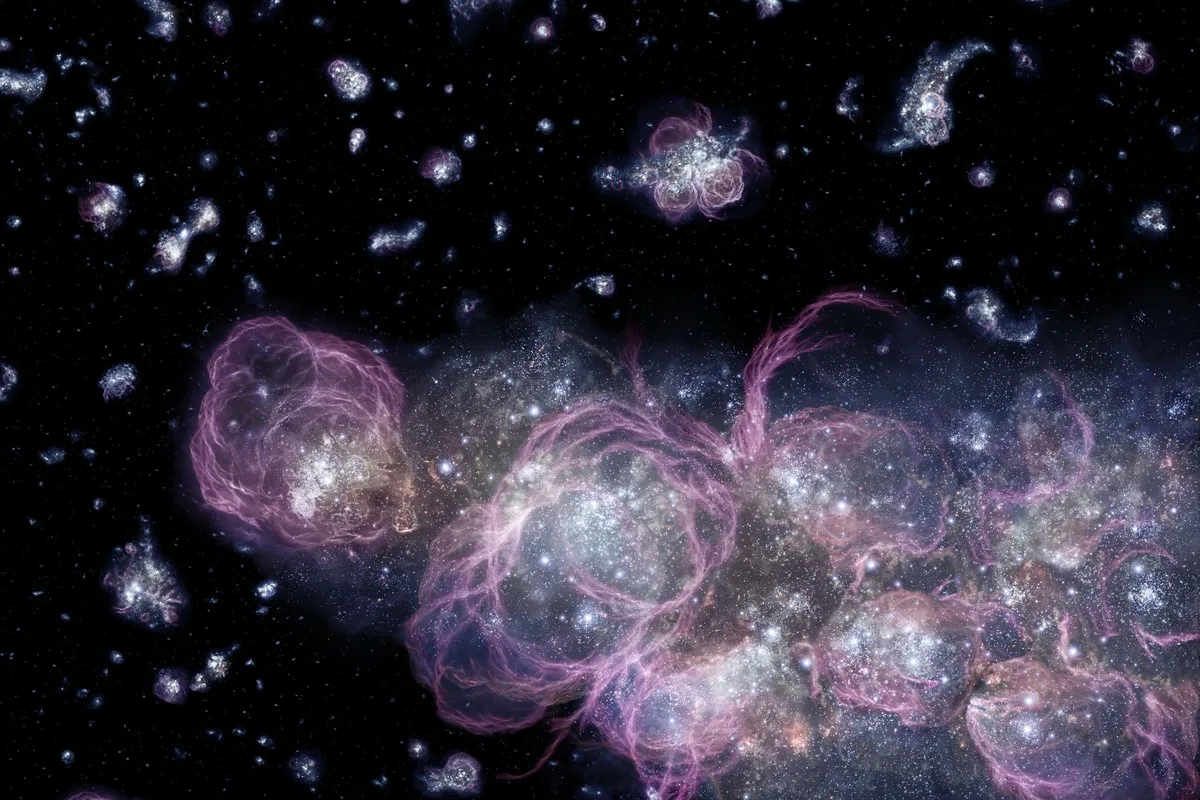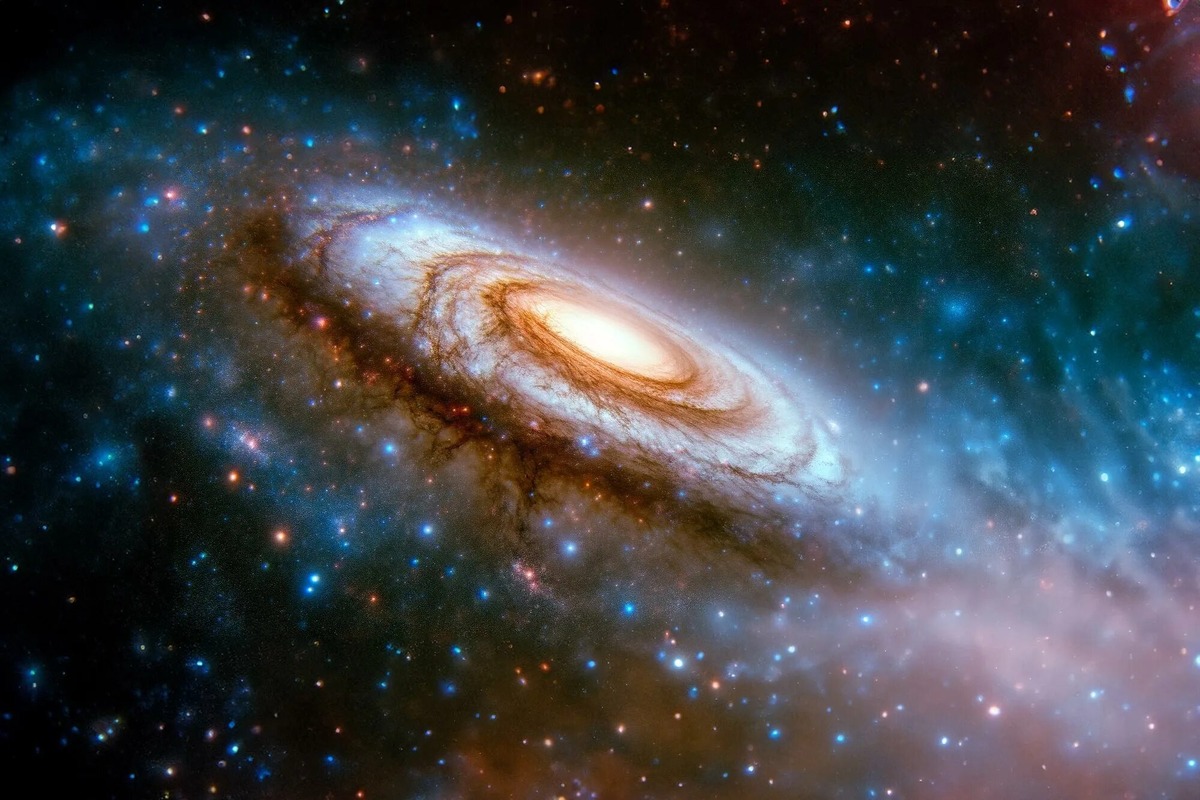Long before light flooded the Universe, discrete energetic processes were already shaping the fate of intergalactic gas. By revealing this early warming, researchers are shedding new light on the dynamics that led to the era of reionisation and the influence of the first massive objects.
The history of the Universe began long before the first stars. Long perceived as a phase of cold and silent inertia, this initial period still intrigues cosmologists. Major milestones such as recombination and the emergence of visible light have been patiently reconstructed, but other grey areas remain. Among them, the era of reionisation remains a fragile boundary between conjecture and detection. But a new signal is about to turn this narrative on its head.
In the beginning, a dark, dense and silent world
For hundreds of millions of years after the Big Bang, the Universe resembled a lightless abyss. No stars or galaxies had yet been born. All that remained were immense sheets of neutral hydrogen, resulting from the primitive chaos of particles. Astronomers refer to this period as the dark ages. Indeed, light was trapped and could not travel freely through space. This stage marks a transition where the universe was still invisible, even though it was already forming.
This cosmic silence was preceded by a key stage called recombination. At that moment, protons and electrons formed stable atoms, allowing light to finally be released. It is this fossil radiation that the COBE and WMAP satellites captured, revealing a frozen image of the cosmos approximately 380,000 years after the Big Bang. But between this recombination and the appearance of the first stars, a huge mystery remained. Until now, there had been no direct signal to tell us what had happened during this long wait.
The strange warming detected before the era of reionisation
To understand the origins of stars, researchers targeted a very specific radio signal. This is the 21-centimetre line emitted by neutral hydrogen. Thanks to its properties, this wave passes through matter without being absorbed. It therefore provides clues about the early stages of the Universe. At that time, visible light was not yet circulating freely, as ScienceAlert points out.
Thanks to a decade of data from the Murchison Widefield Array radio telescope, located on Wajarri Yamaji land in Western Australia, scientists have pushed the boundaries of what can be observed. By extracting the noise caused by the Earth’s atmosphere, nearby stars and even their own instrumentation, they have isolated a residual signal that changes everything. As the project team led by Curtin University points out, the results suggest that intergalactic gas was already heated to around 800 million years after the Big Bang. This moderate temperature makes a scenario of reionisation in a frozen Universe impossible.
The observations, published in The Astrophysical Journal by C. D. Nunhokee and colleagues, confirm that the measured lower limits of the 21 cm power spectrum rule out so-called ‘cold reionisation’ models. This necessarily implies some form of early energy input.

Why this discovery changes our understanding of the early cosmos
The reionisation epoch, which spans approximately one billion years after the Big Bang, marks the transition to a transparent Universe where light from stars and galaxies begins to propagate freely. Until now, it was assumed that this process had been triggered in a very low-temperature environment, produced by the simple adiabatic cooling of cosmic expansion. But the study conducted by the International Centre for Radio Astronomy Research shows that this is no longer tenable.
According to radio astronomer Cathryn Trott, measurements show moderate but significant warming. She points out that this phenomenon could be caused by X-rays from the first black holes or the remains of massive stars. This energy diffused in intergalactic gas would therefore have acted long before visible light appeared.
The effects are not limited to a simple change in temperature. In fact, this early warming disrupts existing models. It suggests that certain structures, such as mini-quasars and nascent galaxies, influenced space long before they became visible. As a result, cosmologists are now rethinking the order of the major stages of the Universe. In addition, the James Webb Telescope could very soon refine this scenario. Thanks to its infrared capability, it can capture the oldest light, as explained by NASA in its files.
Astronomers now have a new fundamental clue: that the Universe warmed up even before it was illuminated. This almost imperceptible thermal nuance is nevertheless redrawing the contours of our cosmic origins.





